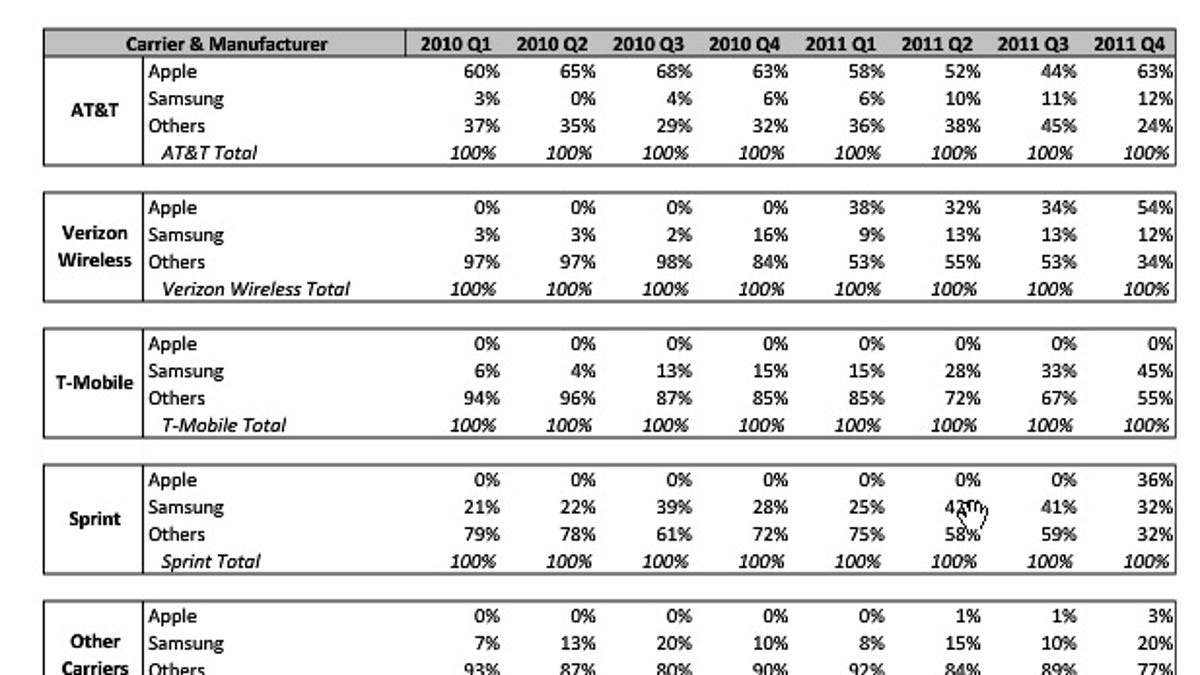iPhone owned 63 percent of smartphone marketshare at AT&T
Apple's iPhone sales dominated market share at AT&T and Verizon, but records released today show Samsung was expanding its share.

Apple's share of the smartphone market dominated at AT&T and Verizon, but Samsung's share was growing, records show.
In the first quarter of 2010, Apple owned 60 percent market share compared with Samsung's 3 percent. The combined market share belonging to all the other phone makers equaled 37 percent.
The data was made public as part of Apple v. Samsung, the ongoing patent trial that has enabled tech fans to take a peek at some of each company's trade secrets. Apple filed suit last year and accused Samsung of pilfering the iPhone and iPad's "look and feel." Samsung countersued and alleged that the iPhone and iPad violated some of its patents.
While it won't surprise anyone that Apple's market share at AT&T or Verizon was big, it is interesting to note that Samsung was making gains.
In the fourth quarter of 2011, Apple's share of the market had grown by 3 percent from the first quarter of 2010, while Samsung's had more than quadrupled to 12 percent during the same period.
At the same time, the combined share for all other manufacturers fell to 24 percent.
The data shows a dramatic change in market share at Verizon. In Q1 2010, with the iPhone still unavailable at the carrier, Samsung controlled 3 percent of the smartphone share while the other carriers controlled 97 percent.
Verizon began selling the iPhone in Q1 2011 and by the fourth quarter of that year, the iPhone owned 54 percent of the market at the carrier. Samsung was up to 12 and the other competitors' combined market share had plummeted to 34 percent.

